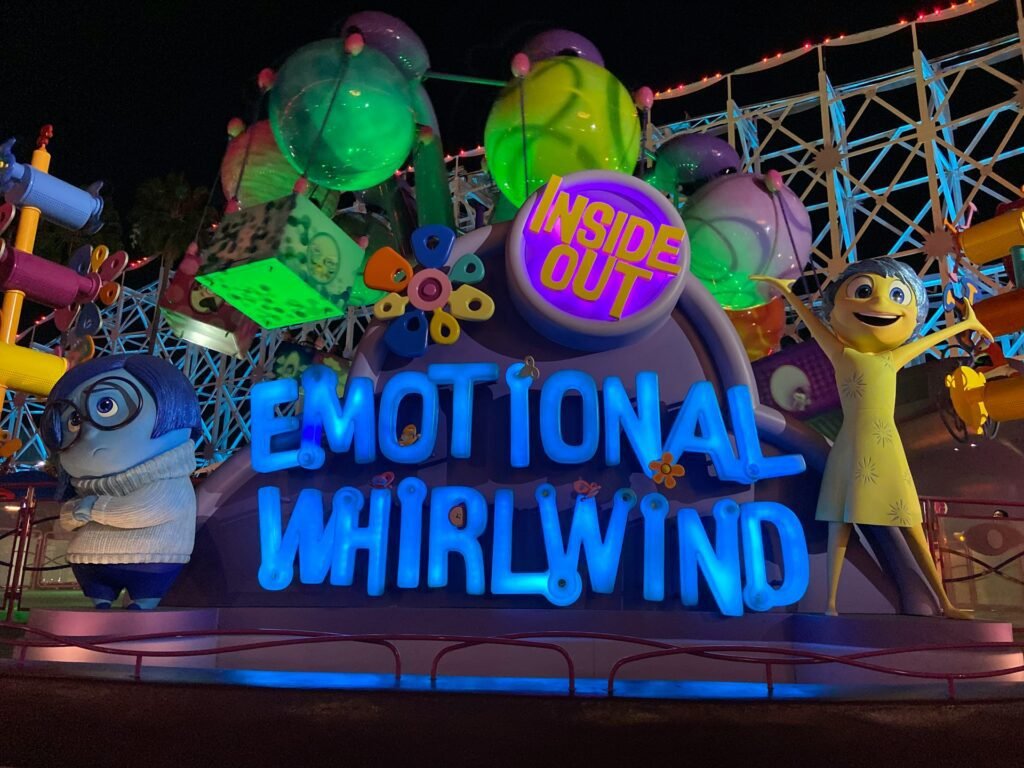
One of my daughter’s favorite movies is Pixar’s Inside Out. We’ve watched it together more times than I can count. And honestly? It’s become one of my favorites too.
It’s clever, heartfelt, and somehow it makes all these big, messy feelings make sense, not just for kids, but for adults, too. And every time I watch it, something small hits me in a new way. A line I missed before. A moment that suddenly feels too familiar. It’s one of those films that reminds you emotions aren’t the problem, it’s how we’ve been taught to ignore or fear them that gets us twisted up.
Watching Inside Out with CPTSD Eyes
Saying that, though, watching Inside Out as someone with CPTSD? That’s a different experience entirely.
In my version, Joy took a sabbatical, Sadness unionized, and Shame built a sleek new command center with way too much funding. Fear’s running 24/7 security on no sleep, and Anger’s locked in the basement “for everyone’s safety.” And dissociation floats in and out like a ghost, barely touching the floor.
This is Inside Out if Riley had grown up with trauma. If her brain had been wired for survival instead of connection. Where love meant danger, so calm felt unfamiliar.
You could almost call it the Stranger Things version of Inside Out, the emotional Upside Down. Still familiar, but darker. The same control panel, but it’s running on fight, flight, fawn, and freeze.
Meet the CPTSD Control Panel Crew
The crew running the control panel in the CPTSD version of Inside Out aren’t exactly Pixar-friendly, but they’ve kept me alive, even if they’ve also made relationships, rest, and self-worth complicated.
Shame – CEO, CFO, and Head of HR
Shame doesn’t just show up occasionally. No, Shame runs the place. Got a small win? Shame’s there to remind you it wasn’t that impressive. Someone compliments you? Shame hits the button that reroutes it straight to Disbelief. Shame is efficient. Organized. A real overachiever. And somehow, even when no one else is around, it still finds ways to make you feel like you’re being watched and judged. (It’s a talent.)
Hypervigilance – Chief of Security
Hypervigilance never sleeps. It’s scanning for danger at all times: texts left on “read,” voice tone shifts, that weird look someone gave you in 2009. It remembers everything and assumes the worst. It’s exhausting, but God help you if you try to ask it to take a break. It thinks relaxing is reckless behavior. “Danger could strike at any time,” it whispers. (Usually while you’re just trying to fall asleep.)
Caretaker – Public Relations & External Affairs
A caretaker’s job is to make sure everyone else is okay, even at the cost of your own well-being. It learned early that being needed was the safest way to exist. It’s charming, helpful, accommodating, and secretly terrified of not being useful. Caretaker will rearrange your entire life to avoid burdening someone else. It’s never learned how to ask for help, but it is excellent at silently burning out.
Dissociation – Ghost Mode Operator
Dissociation is the one who quietly slips in when things get too overwhelming. You’ll know it’s taken over when you’re staring at a wall, unable to remember how long you’ve been doing it. Or when you’re laughing in a conversation but suddenly feel like you’re watching it all from across the room. It’s not dramatic, just floaty, numb, and eerily calm. Like the power’s still on, but no one’s home.
Anger – Currently Locked in Containment
Anger exists. You know it does. But it wasn’t allowed to speak when it needed to, so now it only shows up in one of two ways: total shutdown or explosion. It wasn’t safe to express anger growing up, so it got shoved deep down into the vault. Now? It bangs on the door sometimes, but you’ve been taught to fear it. You call it “irritability” or “just tired,” but it’s there. It wants out. Not to burn the place down, but to be heard.
Hope – Tiny Intern, Not Technically on Payroll
Hope isn’t always around. But sometimes, it sneaks in when things are quiet, usually with something ridiculous, like the idea that you might actually be okay one day. It doesn’t talk much, but when it does, it says things that make your chest ache in a way you didn’t know it could. It’s soft. It’s stubborn. And it shows up even when the others don’t notice. Which might be what makes it magic.
More Characters and the Truth About Healing
There’s more, of course. Guilt. Loneliness. Perfectionism. This is the part of me that attempts to find humor in the midst of discomfort. The part that wants connection but still flinches when it gets too close.
But even with this messy inner cast, I’m starting to believe something: they were all trying to help. Every single one of them, even the ones that make my life harder now, showed up to protect me when I didn’t have anything else.
Healing, for me, has been about gently inviting them to take a step back. Letting Joy peek her head in again. Allowing Sadness to just sit next to me instead of taking over the whole console, and giving Hope a badge and maybe a real desk.
It’s been slow work. But it’s been worth it.
Photo by Dean Gibbons on Unsplash
